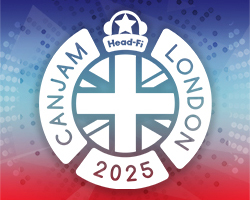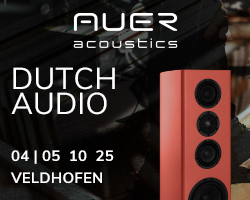Jim Goulding, the guy that owns Diffraction Begone has been touting his wares on the various hifi forums for a good few years now and I’ve read with interest about these little compressed wool baffles that fit over your tweeters with interest, but never thought of contacting him until fairly recently.
Jim is based in the US and is a nice guy to chew the fat with. He is passionate about his product, but not evangelical, and is happy for you to make up your own mind as to its merits.
After a couple of conversations I asked Jim if he would be willing to let me review the baffles for Hifi Pig. He asked for a photograph of my speakers and a couple of measurements he also requested were duly sent. Unfortunately my loudspeakers of the moment are ancient Victor SX7s which are a large 3 way “bookshelf” design and, according to Jim, unsuitable for the Diffraction Begone treatment.
The only pair of speakers I have in the sty at the moment that were deemed suitable were an old pair of Linn Index Mark 1s that had been consigned to the spare room after a somewhat ill-advised attempt to revamp the rather tatty cabinets. They are a two way design with the tweeter positioned centrally above the bass driver.
Now, it’s been a long while since I listened to the little Linns and, by way of retuning myself to their sound, I mounted them on their stands, wired them up and listened to a few CDs. The Index’ were a speaker with a bit of a reputation for poor imaging, a poor soundstage and a somewhat two dimensional sound. However, I quite liked them and could live with their obvious failings.
The Diffraction Begones arrive in a padded envelope with the baffles themselves, a couple of jiffy bags of Velcro and some typed fixing instructions. It all seemed pretty straightforward and should only take anyone five minutes or so to fit them to the loudspeakers.
It all seemed pretty straightforward and should only take anyone five minutes or so to fit them to the loudspeakers.
The baffles fit around the tweeter and one small problem I encountered was that the pegs used to attach the speaker grills were in the way – so if you order a pair of these you may want to mention it to Jim if you think you may have the same problem. Me, I dug out the pliers and removed the offending pegs!
Listening
The first immediate impression, once the baffles were fitted, was that the sweet spot becomes just that – a spot. Move from the spot and it’s lost somewhat. This isn’t a problem to me as I’m a solitary beast that likes to do any serious listening without the distraction of other folk.
Listening to the Chain from Fleetwood Macs’ “Rumours” album the first word that comes to mind is “snap!” By this I mean that instruments seem to snap into place in the mix.
Snap was also the word that sprang to mind when listening to hi-hats and snares. There is no overhang and the sound stops when it is supposed to and this gives focus to the mix.
Initially the sound you get is a little disconcerting and doesn’t sound right, but the more you listen, the more you realise that what is actually happening is that you are isolating specific bits of the mix and focusing on them –specifically the higher registers. Prolonged listening and you become accustomed to this effect and are rewarded with a much more homogenous sound –clearly this is not the baffles themselves but your brain becoming accustomed to the new presentation the baffles afford.
The big question is “Is this an improvement?” and yes I think it is. The effect of the baffles is to give you a much more accurate portrayal of the mix as it would be heard at the mixing desk and that for me is a good thing. This will not be for everyone i fear!
Do the baffles make a mediocre pair of loudspeakers into giant killers? Well no they don’t, but what they do is improve the focus by narrowing the sweet spot and making the higher registers, particularly hi-hats and snares more defined and precise.
If you like your loudspeakers to produce an accurate portrayal of the stereo image then Diffraction Begone baffles will certainly help you in your quest.
Diffraction Begone baffles cost $55.95 plus $3.50 packing in the US and $7.50 for oversees orders.
Author -Stu
Jim added “What the pads are doing, actually, is damping the reflective surface and edges of a speakers’ cabinets so that spreading waveforms shorter in length than a cabinet is wide are absorbed by the wool and not mixing in late and out of phase with the pure signal.”




































































































































































































Jim is a great guy to deal with, and I have happily used these pads for about four years now. Oddly, I expected the benefits to be manifest in the HF (D’uh!), but was surprised to hear better midrange presence and timbre. I also appreciated the better imaging these bought, although I don’t share the experience that the sweet spot becomes smaller. A bit of a sonic bargain IMO. (I use them with Royd RR3, a small 2-way monitor).
Alan.